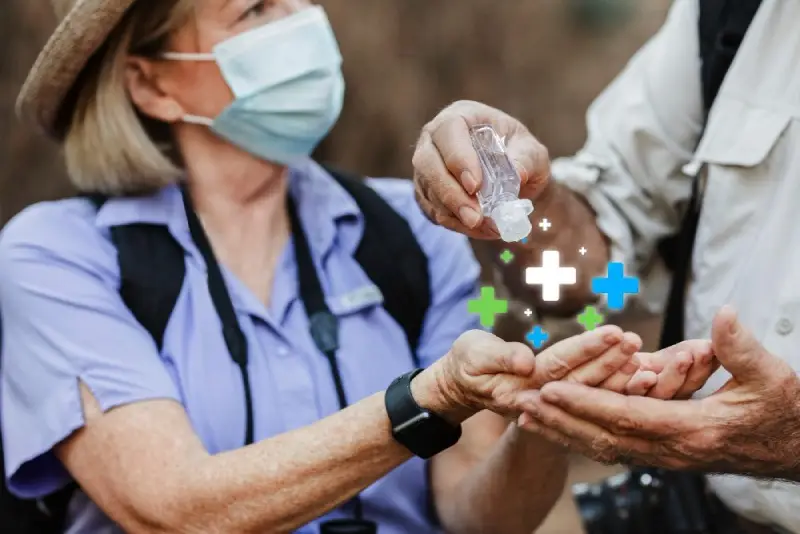- Published on: Jul 31, 2021
- 2 minute read
- By: Endocrinologist
Superfoods Are Not The Only Healthy Option: Spinach, Kale And Cabbage Pack A Powerful Nutritional Punch
Healthier foods are not always called superfoods. There is spinach, kale, and cabbage that have more nutrients than other greens out there. Below you will find some of the healthiest foods like green beans with less sugar content or avocado which helps to reduce cholesterol levels in your body.
- Sunflower Seeds - Sunflower seeds are the perfect snack for on-the-go people. They're high in protein, healthy fats, and fiber while still being low-calorie. Best of all, they can be eaten whole with no preparation needed! Sunflower seeds have long been a favorite among builders because their shape makes them easy to use as fasteners, but now it's clear that these tiny nuts also make great snacks when you need something quick and nutritious at your side.
- Unsweetened Greek Yogurt - The daily consumption of yogurt has been shown to reduce the risk for type 2 diabetes by 14%. Not only is it a healthier option than regular yogurt, but its low GI and high calcium content make it an excellent choice.
- Flax Seeds - Flax seeds are a superfood that helps to manage diabetes. This is because of the gel-forming fiber they contain which slows digestion and releases glucose into your blood slowly so it doesn't spike in one sitting like sugar would.
- Oranges and other Citrus Fruits - Citrus fruits such as oranges and grapefruits are great sources of fiber, which can help with blood sugar levels. However, it is always best to eat the whole fruit rather than drinking just juice. When juicing citrus fruits their GIs vary greatly, but an average size orange has a GI of 40 while an average size grapefruit has a lower GI of 25 because all its natural fibers remain intact when eaten in the whole form instead of being converted into liquid through the juicing process.
- Chia Seeds - If you're looking for an easy way to improve your diet and manage blood sugar levels, chia seeds can be a great place to start. They are rich in antioxidants which may help reduce the risk of diabetes or any complications from it. Another superfood that can help with managing our body's response to glucose is Chia Seeds due their richness in Omega-3 fatty acids, fiber, and magnesium; these nutrients have been shown by research studies as being instrumental towards reducing one’s risk of developing type 2 Diabetes mellitus (T2DM) or even its severity when diagnosed properly.
- Quinoa - One of the healthiest grains on earth, quinoa is packed with protein and antioxidants to help you keep your blood sugar levels in check. Quinoa also has more fiber than most other grain options which will give you a feeling of fullness that lasts longer because it takes about 30 minutes for our stomachs to tell us we are hungry again after eating.
- Berries- Berries are a great healthy option for your sweet tooth. They provide many benefits like vitamin C, K, manganese, and fiber while also being helpful with diabetes management. Whether you enjoy strawberries or blueberries; berries can satisfy any craving!
- Tomatoes - Tomatoes are the perfect diet addition for those looking to reduce their risk of cancer and heart disease. Lycopene is a powerful substance that has been found in multiple studies to be more easily absorbed by the body when consumed as part of an already healthy diet, untouched by processed sugars or carbs. Tomatoes have a low GI ranking which means they can keep you feeling full longer even without adding extra calories from fat and sugar!
- Beans - Beans are a great source of fiber and protein, which is equivalent to an ounce of meat. While they contain carbohydrates, all type beans will also provide you with vitamins and minerals such as magnesium or potassium in addition to the high amounts that it contains. Beans can be any color from light brown when cooked like kidney beans to black for pinto beans; no matter what your preference is there's something out there just for you!
- Fish High in Omega-3 Fatty Acids - Fish and fish oil, which contain zero carbohydrates, are a rich source of protein that can be added to any meal for diabetes management. This is because they slowly digest due to their low carb content and release sugar into the bloodstream at an even rate. Salmon high in omega-3 fatty acids ensures this effect by balancing out your carbohydrate intake with its slow digestion time while also providing healthy fats from Omega 3s!
Diabetics must carefully measure and monitor their blood glucose levels. This is important because it can help you determine whether adjustments need to be made in your diet, medications, exercise routines, etc. It's recommended that diabetics with diabetes symptoms check their sugar twice a day with an accurate glucometer and record the numbers in a log so they can track any increase or decrease over time of these readings









